 W
WThe HCU-6/E or 463L Master Pallet is a standardized pallet used for transporting military air cargo. It is the main air-cargo pallet of the United States Air Force, designed to be loaded and offloaded on today's military airlifters as well as many civilian Civil Reserve Air Fleet (CRAF) cargo aircraft.
 W
WThe Advanced Combat Optical Gunsight is a series of prismatic telescopic sights manufactured by Trijicon. The ACOG was originally designed to be used on the M16 rifle and M4 carbine, but Trijicon has also developed ACOG accessories for other firearms. Models provide fixed-power magnification levels from 1.5× to 6×. ACOG reticles are illuminated at night by an internal tritium phosphor. Some versions have an additional daytime reticle illumination via a passive external fiberoptic light pipe or are LED-illuminated using a dry battery. The first ACOG model, known as the TA01, was released in 1987.
 W
WThe AN/ARC-164 is an aircraft station that operates in the aeronautical mobile (OR) service / B band (NATO). It might be found on B-52G/H, B-1B, C/EC/RC-26D, KC-135, C-23, C-130, C-141, F-15, A-10, F-16, UH-1D, CH-47, H-53, H-60 and S-3B aircraft.
 W
WAries is an American sounding rocket and target rocket, developed by Space Vector Corporation from retired LGM-30 Minuteman I intercontinental ballistic missile (ICBM) stages for use by the United States Air Force and NASA. Taken over by Orbital Sciences Corporation, Aries, as the Target Test Vehicle, remains in use.
 W
WATLAS-I, better known as Trestle, was the codename for a unique electromagnetic pulse (EMP) generation and testing apparatus built between 1972 and 1980 during the Cold War at Sandia National Laboratories near Kirtland Air Force Base in Albuquerque, New Mexico.
 W
WThe BC-348 is a compact American-made communications receiver, which was mass-produced during World War II for the U.S. Army Air Force. Under the Joint Army-Navy nomenclature system, the receiver system became known as the AN/ARR-11.
 W
WThe Distributed Common Ground System (DCGS) is a system which produces military intelligence for multiple military branches.
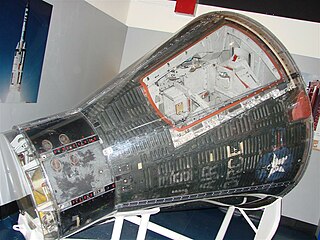 W
WGemini SC-2 was the second NASA Project Gemini full-up reentry capsule built. This McDonnell Gemini capsule was the first space capsule to be reused, flying twice in suborbital flights. SC-2 flew on Gemini 2 and OPS 0855 flights. The capsule is currently on display at the Air Force Space and Missile Museum at Cape Canaveral Air Force Station.
 W
WThe Hammarlund Super Pro was an American-made radio communications receiver.
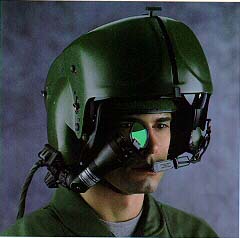 W
WA helmet-mounted display (HMD) is a device used in aircraft to project information to the pilot's eyes. Its scope is similar to that of head-up displays (HUD) on an aircrew's visor or reticle. An HMD provides the pilot with situation awareness, an enhanced image of the scene, and in military applications cue weapons systems, to the direction their head is pointing. Applications which allow cuing of weapon systems are referred to as helmet-mounted sight and display (HMSD) or helmet-mounted sights (HMS).
 W
WAEDC Hypervelocity Wind Tunnel 9 is a hypersonic wind tunnel owned by the United States Air Force and operated by National Aerospace Solutions The facility can generate high Mach numbers and high Reynolds for hypersonic ground testing and the validation of computational simulations for the Air Force and Department of Defense.
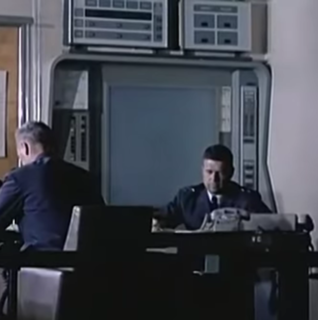 W
WIconorama was a Cold War electronic projection system for graphic presentation ordered by the USAF in 1959.
 W
WJaguar was a three-stage sounding rocket developed by the United States Air Force in the early 1960s. Designed for air launch to allow soundings from remote areas without infrastructure, it was only launched twice before the project was abandoned.
 W
WThe Joint Surveillance System (JSS) is a joint United States Air Force and Federal Aviation Administration system for the atmospheric air defense of North America. It replaced the Semi Automatic Ground Environment (SAGE) system in 1983.
 W
WLow Altitude Navigation and Targeting Infrared for Night, or LANTIRN, is a combined navigation and targeting pod system for use on the United States Air Force fighter aircraft — the F-15E Strike Eagle and F-16 Fighting Falcon. LANTIRN significantly increases the combat effectiveness of these aircraft, allowing them to fly at low altitudes, at night and under-the-weather to attack ground targets with a variety of precision-guided weapons.
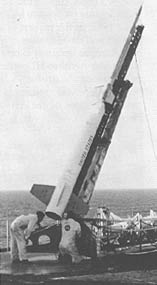 W
WThe Nike Apache, also known as Argo B-13, was a two-stage sounding rocket developed by Aerolab, later Atlantic Research, for use by the United States Air Force and NASA. It became the standard NASA sounding rocket and was launched over 600 times between 1961 and 1978.
 W
WThe Omni Directional Vehicle (ODV) is a ground support utility vehicle manufactured by Hammonds Technical Services Inc. in Houston, Texas. The ODV can perform a variety of jobs, including towing aircraft and plowing snow. The largest variant, the G-90, can tow up to 90,000 pounds. The ODV's main advantage over other utility vehicles is its zero degree turning radius, which allows it to turn in any direction from a fixed point. This allows the ODV to operate in confined spaces by eliminating the need to turn the vehicle in a large arc. The driver can also tow in any direction without having to look over their shoulder. The ODV is a round vehicle with a rotary hitch mounted on its outer ring to allow the driver to quickly make adjustments or to switch between pushing or pulling. The vehicle turns by engaging either of its two drive wheels.
 W
WThe word PAVE is a United States Air Force program identifier relating to electronic systems. Prior to 1979, Pave was said to be a code word for the Air Force unit responsible for the project. Pave was used as an inconsequential prefix identifier for a wide range of different programs, though backronyms and alternative meanings have been used. For example, in the helicopters Pave Low and Pave Hawk it was said to mean Precision Avionics Vectoring Equipment, but in Pave Paws it was said to mean Precision Acquisition Vehicle Entry.
 W
WThe Ford Aerospace AN/AVQ-10 Pave Knife was an early targeting pod developed by the USAF and US Navy to designate and guide laser-guided bombs.
 W
WThe Lockheed Martin AN/AAS-35(V) Pave Penny was a laser spot tracker carried by US Air Force attack aircraft and fighter-bombers to enable them to track a laser spot on the ground. PAVE was later used as an acronym for Precision Avionics Vectoring Equipment.
 W
WThe Westinghouse AN/ASQ-153\AN/AVQ-23 Pave Spike is an electro-optical laser designator targeting pod used to direct laser-guided bombs to target in daylight, visual conditions. It contained a laser boresighted to a television camera, which displayed its image on a cockpit screen.
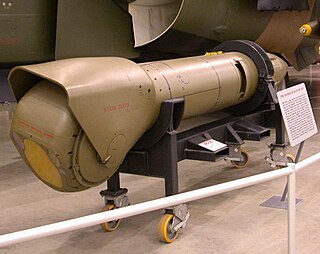 W
WThe Ford Aerospace AN/AVQ-26 Pave Tack is an electro-optical targeting pod for military attack aircraft. It uses a laser and a forward looking infrared to find and designate targets for laser-guided bombs and other precision-guided munitions. Pave Tack's images are routed to a cockpit display, usually for the weapon systems officer.
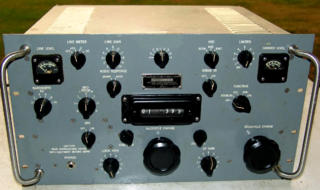 W
WThe R-390A /URR is a general coverage HF radio communications receiver designed by Collins Radio Company for the US military.
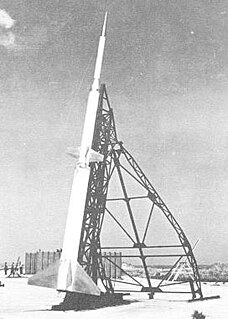 W
WThe Exos, originally designated RM-86 and later PWN-4, was a sounding rocket developed by the University of Michigan and NACA for use by the United States Air Force.
 W
WThe SCR-277 was a mobile, trailer mounted radio range set for radio guidance of aircraft. It was standardized by the U.S. Army in June 1941.
 W
WSHORAN is an acronym for SHOrt RAnge Navigation, a type of electronic navigation and bombing system using a precision radar beacon. It was developed during World War II and the first stations were set up in Europe as the war was ending, and was operational with Martin B26 Marauders based in Corsica, and later based in Dijon and in B26's given to the South African Airforce in Italy. The first 10/10 zero visibility bombing was over Germany in March 1945. It saw its first combat use in the B-25, B-26 and B-29 bomber aircraft during the Korean War.
 W
WThis is a list of vehicles used by the U.S. Army Signal Corps from World War I through World War II.
 W
WSkokie was a family of research vehicles developed by the Cook Electric Co. for the United States Air Force during the mid to late 1950s. Launched from a B-29 bomber, Skokie 1 was an unpowered, ballistic vehicle, while Skokie 2 was rocket-propelled; both were used for evaluating and testing high-speed parachute recovery systems.
 W
WThe Space Fence is a second-generation space surveillance system built by the US Air Force in order to track artificial satellites and space debris in Earth orbit.
 W
WSAM 26000 was the first of two Boeing VC-137C United States Air Force aircraft specifically configured and maintained for use by the President of the United States. It used the callsign Air Force One when the President was on board, otherwise SAM 26000, with SAM indicating Special Air Mission.
 W
WSAM 27000 was the second of two Boeing VC-137C United States Air Force aircraft that were specifically configured and maintained for the use of the President of the United States. It used the call sign Air Force One when the President was on board, and at other times it used the call sign SAM 27000, with SAM indicating 'Special Air Mission.' The VC-137C serial number 72-7000 was a customized version of the Boeing 707 which entered service during the Nixon administration in 1972. It served all US presidents until George W. Bush and was retired in 2001. It is now on display at the Ronald Reagan Presidential Library.